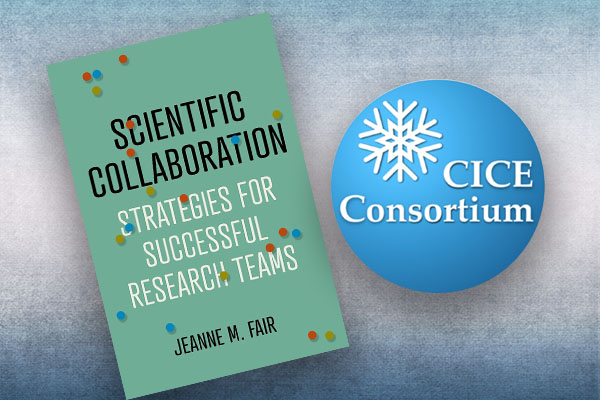CICE Consortium is highlighted for Scientific Collaboration

The CICE Consortium, which provides the Icepack sea-ice column-physics submodule for E3SM, is highlighted in a new book by Dr. Jeanne M. Fair entitled “Scientific Collaboration: Strategies for Successful Research Teams”. The book begins with a description of the “dream team” assembled to understand and combat the deadly hantavirus outbreak in New Mexico and neighboring states, in 1993. This transdisciplinary group of scientists and medical professionals quickly identified the virus and its carriers (deer mice), realized that it is endemic to the region (through Native American wisdom), and that it cycled with the climate (ENSO in particular). As a result, New Mexicans are warned to wear masks when cleaning up mouse droppings – breathing in hantavirus-carrying aerosol droplets causes the lungs to fill with fluid in a matter of hours, an indirect infection pathway not previously appreciated.
The CICE Consortium is presented in Chapter 2, “Communities”, as an example of the many layers of community that can contribute to and benefit from a team-based project. In this case, the levels of community are the Consortium at the center, surrounded by the sea ice modeling community, which in turn is part of the climate modeling community and the larger climate science community (I did not insist on using the term “earth system” instead of “climate”). The chapter also discusses the need for community in research teams, community characteristics, how to build community, ways of belonging, and what communities can accomplish.
The book goes on to discuss how scientific collaborations are changing in the modern world, the science of Team Science, the importance and fragility of trust, of communication, and other insights to building successful research teams. I have always maintained that the best part of my job as a scientist and sea ice modeler has been working with the community to make the model better, and this book brings out all the reasons why that is true.
Contact
- Elizabeth Hunke, Los Alamos National Laboratory
This article is a part of the E3SM “Floating Points” Newsletter, to read the full Newsletter check:


